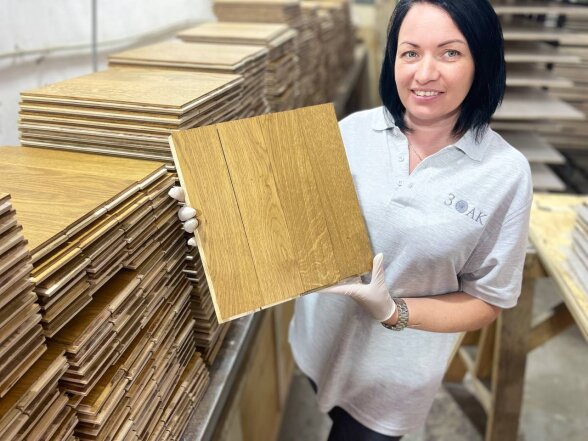Unique Floor Finishes Hand-Made in the UK
With Complete Protection from Coffee Wine and Oil

3 Oak Hand-Finishing Mastery Made in the UK
At 3 Oak, we take pride in precision and craftsmanship. Every plank starts with carefully selected timber that is hand-finished in our UK workshop. This personal approach means you get a truly bespoke colours, tailored to your taste and style. With total control over every stage, we can create unique tones and finishes you simply won’t find anywhere else.
Our Signature Finish Effects Include:
- Aged Finish creates the look of natural wear and character, perfect for period properties or anyone wanting a vintage feel.
- Antique Finish adds a soft patina, giving the impression your floor has been there for generations.
- Reclaimed Effect has the charm of reclaimed timber, without the high cost or sourcing challenges.
- Burnt Finish is inspired by the Japanese art of Shou Sugi Ban, this look is striking and adds extra resistance to moisture and decay.
- Band-Sawn finish is subtle texture left by a band saw, blending rustic appeal with modern style.
Please note: Our bespoke finishes require more staining materials and can take up to 10 days to complete.


The 3 Oak Quality Promise
Floors That Last
Our floors are built for everyday life, combining timeless style with robust durability.
Kind to the Environment
We use sustainable methods, so your floor is both beautiful and eco-friendly.
Personal Service from Start to Finish
From the first consultation to aftercare, our team guides you every step of the way, making the experience easy and enjoyable.
Value for Designers and Architects
We’re here to support you in making your projects easier and your clients happier.
- Free Hand Samples with Fast Delivery, experience our quality and finishes before you buy.
- Order Standard Large Samples (650x650mm) which are available in any pattern or colour
- We can also produce custom samples in any pattern.
Work with us to access flexible options, expert advice, and exceptional support at every stage.
